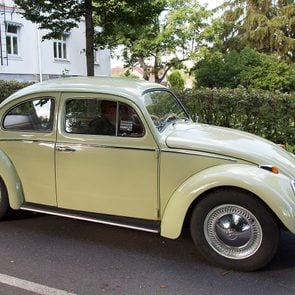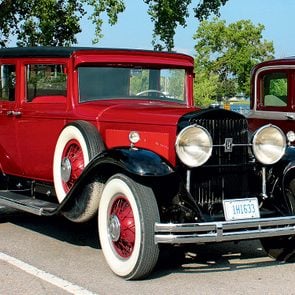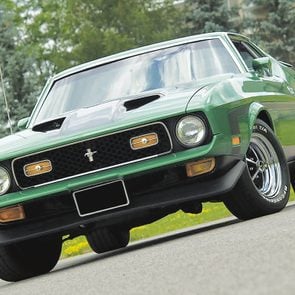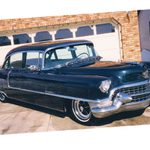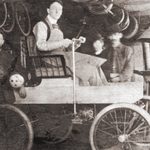Confessions of an MGB Enthusiast
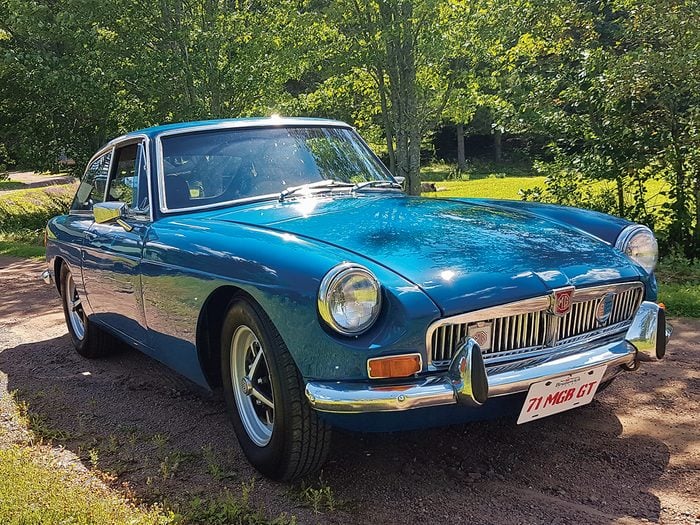
Going from “Dad’s co-pilot” as a youngster to owning an MGB GT of my own in adulthood just seemed inevitable.
On a warm summer’s evening my husband and I are standing in our driveway looking at the old car before us. “You’ll never sell it,” he scoffs as he turns and walks away. He may be right, I thought to myself while smiling. The familiar chrome accents, the round glass headlights and novel hatchback style, all call to me. This is my 1971 MGB GT. The MGB, or “the Poor Man’s Aston Martin,” was made in England by the British Motor Corporation (BMC) from 1962 to 1980. The success of this new open-top roadster was unexpected. Car enthusiasts all over the world loved its sports car feel and affordability. In 1965, a variation of the soft-top roadster was introduced as the MGB GT. This three-door coupe was designed by the Italian firm Pininfarina, also known for designing different Ferrari models. The MGB GT had an immediate loyal following, which is present to this day.
My Father’s MGB GT
My introduction to MGs came through my father, who owned an MGB GT for a number of years. Its uniqueness was apparent from the moment I first saw it. I recall being about ten years of age when I heard an unusual noise approaching our house. As I listened, I was certain that something had pulled into our driveway. My mother’s desperate cry of “Oh no, he didn’t!” clarified this thought. I ran outside to see my father getting out of a small, white car. Closing the door, he stood a moment, head tilted, deep in thought. Curious, I watched as my father walked around the car, pausing at certain angles to study its lines. With a serious and focused look, he examined every detail of that car. His hand occasionally touched the body, an act that gave away his pride in ownership. He eventually noticed me and, looking straight at me, he said quite simply, “It’s an MG.”
I was astonished. My father’s usual stern and disciplined engineering mind had been replaced by a free-spirited expression of absolute bliss. There was a complete abandonment of sensibility! Something I’d never seen him display before. “Want to go for a ride?” he asked, smiling, hoping to find an accomplice. That moment was the beginning of our adventures in the MG. I have two distinct memories of my father—cheering on the Montreal Canadiens and riding around in his MG or “the Bomb” as he liked to call it. Whether it was down the Don Valley Parkway in Toronto or cottage country in the Kawarthas, we were a team; both of us committing to what we considered a marvel of British engineering.
Others did not share this affection for the MG. Over the years, the hard start-ups, prolific rust and persistent electrical problems have given the MG a distressing reputation. It has been described as being finicky, unreliable and definitely a “not to buy” car. Still, my father and I loved it, while others in the family tolerated it. Perhaps it was that first drive that cemented my role as dad’s co-pilot.
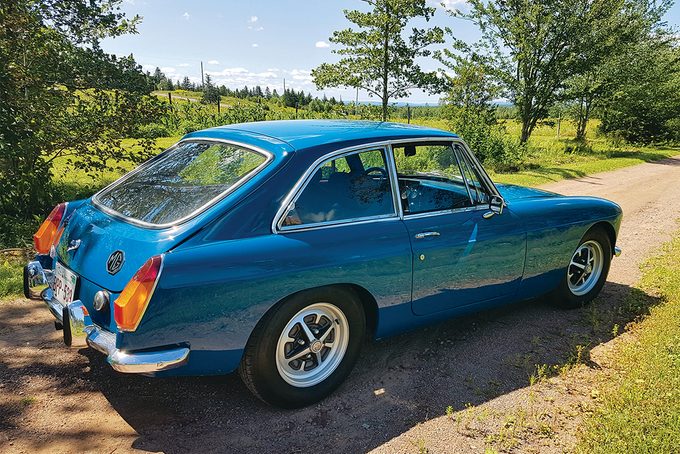
Road Trips in the MG
Each of our MG adventures began with a few moments in the “cockpit.” There was a distinct routine which began with pulling out the choke, then a courageous turning of the key. We would sit in absolute silence, listening to the click, click, click of the fuel pump and then my father, taking a chance, would engage the starter. That grating “wrrr, wrrr” noise would fill the interior as we waited for the turnover. Once the engine fired up and rumbled to life, my father would relax and say, as if he never doubted the MG, “Ah… there.” We always took a moment to listen to the four-cylinder, 95-horsepower engine. Often my father would gently rev the engine, to accentuate its sporty sound. We would then share a smile and drive away.
Our road trips were exciting. Low to the road, rumbling suspension; it felt like we were on the last lap of the Indy 500. People would hear us approaching and turn to look. Other sports car enthusiasts would wave. It was all part of the ride in that magnificent car. As we drove, I was drawn to watching my father’s coordinated movements of hand and feet, as he operated the manual transmission. I was mesmerized by the sounds from the engine as he shifted up or down. Unknown to me, I was absorbing the art of driving a manual car, which would prove to be a useful skill in the years to come.
Eventually, my father stopped driving the MG and it sat. My sister took over its ownership and, in time, it was sold. I was devastated but I knew that one day I would own one. That moment came when I spotted a 1971 MGB GT for sale at a local car dealership. My husband was skeptical, but I was convinced. The fact that the shop mechanic had to fiddle with the engine so I could take it for a test drive, or that it seemed to stall and lurch for no reason, did not discourage me. I had learned from my father that these glitches were perfectly acceptable for an MG! The moment I was handed the keys, I felt immense pride at owning my own MG and could not hide my excitement as I climbed into that car.
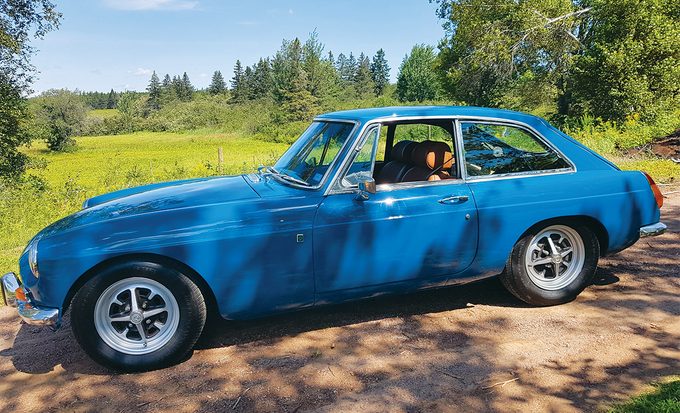
An MGB GT of My Own
Unfortunately, those happy emotions quickly faded. My first drive home was so rough that I constantly checked the rear-view mirror, expecting to see parts left behind on the road. I nervously ignored the engine noises, which sounded like the rumblings of an imminent explosion, and made every attempt to erase my husband’s disapproving glare from my mind. Still, I was smiling as I finally pulled into our driveway, albeit weakly. I have since become accustomed to its idiosyncrasies and began to love my car as my dad once loved his.
I recall the special moment I had when I told my dad of my purchase. The whole family was meeting in a hospital room to offer support and comfort to a relative who was scheduled for an operation. The atmosphere in the room was very solemn as reassuring words were shared. During a quiet moment, my eagerness to reveal my news took over and despite the serious nature of our visit, I announced, “I bought an MG. It’s a ’71.”
The resulting silence was deafening. Relatives glared at me for discussing such a trivial matter and my father gave me a long look as it took a moment for my words to register. Then that smile appeared, and he said quite simply, “That’s a good year.”
Fortunately, the relative made a full recovery and my father, forever the MG enthusiast, has enjoyed hearing of my MG adventures. He completely understands my delight in owning such a unique car, and just like him, I have had those moments of complete abandonment of sensibility. I can’t look at my MG, nor drive it, without smiling. I’m so taken by its exquisite design that I often find myself sitting alongside it on a warm summer’s evening, just gazing at its fine lines. When I park it and walk away, I invariably look over my shoulder to steal another glance at its distinctive grille and reputable MG badge.
I will admit that owning a classic car is not for the faint of heart. All it takes is one tiny scratch or dent and I become a major crime scene investigator. The debate of restoration versus originality provokes an intense dialogue in my head. And I’ve come to accept that all repairs follow the Law of Threes—two things break as one is fixed. Nonetheless my devotion to and enjoyment of this car have never wavered. At some point though, I probably will sell it to someone else who will enjoy its finicky ways. I don’t expect to get a lot of money, but I’ll be looking for a promise to take care of it. And, of course, I’ll need to see that smile!
Next, read the incredible story of how one man missed out on his dream car as a teenager, then found it parked in his driveway 25 years later.
